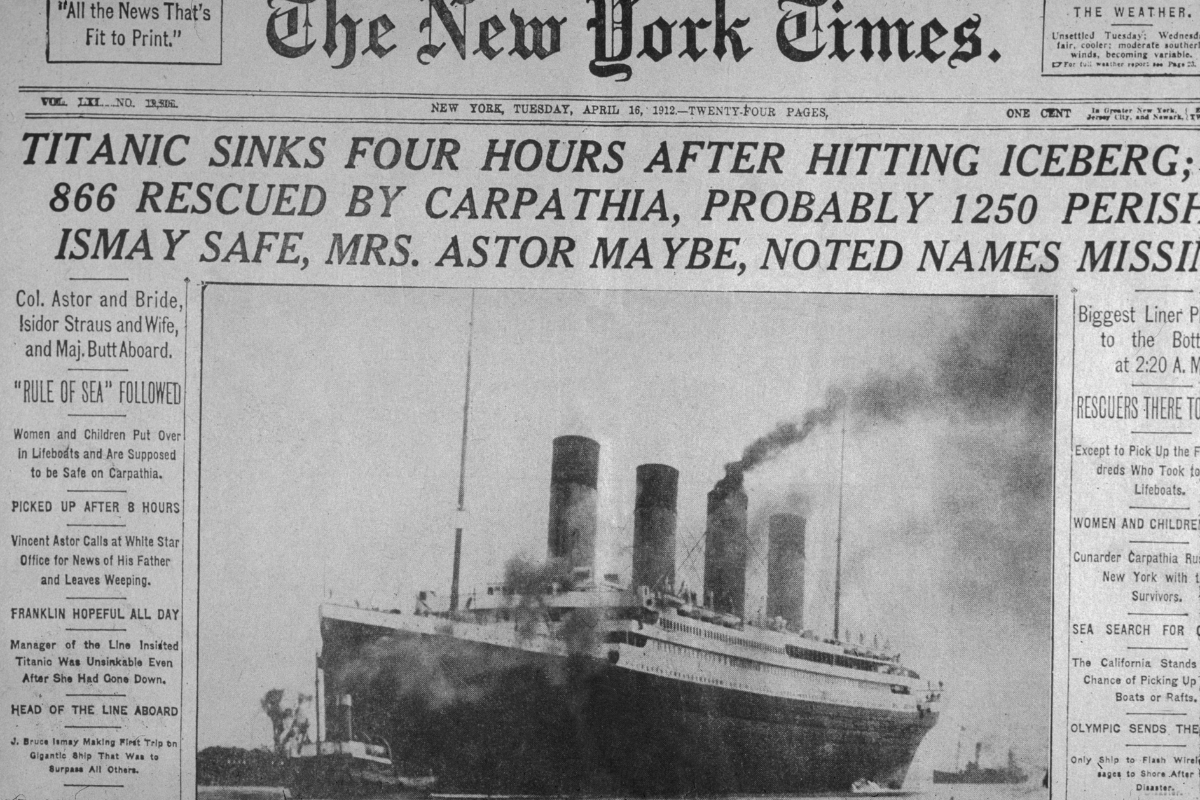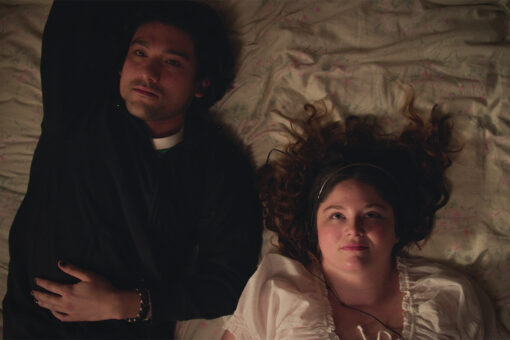I’m hardly alone in being a lifelong devotee of all things Titanic, whether watching the Titanic-inspired films or reading passengers’ memoirs. Like many, I was intrigued to see the latest developments of the ship’s wreck exploration, and it rekindled my interest in learning about the lives of the people who sailed on its first and final voyage. What you may not know, though, is that there were quite a few Jewish passengers on the Titanic, and most of them were under 40 years old. What might it have been like to be one of them? I decided to delve into learning about both those who survived and those who tragically didn’t make it.
There were at least 69 passengers confirmed to be Jewish aboard the Titanic, but the number is likely higher than that. In 1912 when the Titanic sailed from Southampton, most ships were divided into first, second and third classes, which essentially broke down passengers by social and economic sectors. Additionally, there were at least three Jewish crew members, including British barber Herbert Klein. Jewish passengers on the Titanic could be found in every class and represented a variety of nationalities — they came from Poland, England, the United States and modern-day Belarus — among other countries.
Eva Hart, a 7-year-old from London, was in a second-class with her parents Benjamin and Esther; they were immigrating to Canada for her father’s work. It was an exciting experience for her, as she had never seen a ship before, but her mother felt differently: She had a “premonition” about the ship and refused to sleep during the night, sleeping during the day and keeping vigil all night long.
Leah Aks, 21, was originally from Poland but had immigrated to England as a child. She was on her way to the United States along with her baby son Frank to join her husband in Virginia; she traveled in third class, which likely had the largest representation of Jewish passengers.
One of the main reasons why Jews left Eastern Europe in that time period was to avoid both the Russian army draft and pogroms. This was probably part of the rationale for a passenger like 22-year-old Eliezer Gilinsky’s immigration to the United States from Lithuania. Like Leah, he also traveled in third class.
Some young Jewish passengers had a luxurious experience on the Titanic’s first class, which offered spacious suites and personal stewards, like 19-year-old Ruth Taussig. Returning to her home in New York City after a trip to Vienna, Ruth even had her own room aboard the Titanic, something most teenagers on board could only dream of.
Jews who kept kosher were able to enjoy kosher food while sailing the Titanic. Milk and meat plates and serving utensils were marked as such for the kosher kitchen, and apparently there was even a hired chef to cater specifically for the Jewish passengers. The food on the Titanic was said to be excellent by all accounts, even in third class. On many ships leading up to 1912, many Jewish passengers who kept kosher had to bring their own food with them. Though it wasn’t documented, it’s also possible some of the Jewish passengers on the Titanic held services together.
To amuse themselves on the ship, Jewish children, such as 7-year-old Meier Moor, played games and ran around on the decks, perhaps playing with a favorite toy. First class children and teens were allowed to use the gym during a special allotted time during the day. Young adults could read, take walks, play cards, chat with other passengers; young adults in first class like Ruth Taussig could swim in the Titanic’s pool — the ship was the first of its time to feature a heated swimming pool.
Tragically, the Titanic’s maiden voyage was cut short when the ship collided with an iceberg on April 14, 1912. Eva Hart was sleeping in her second class cabin when the collision occurred. Her father wrapped her in a blanket and brought her and her mother to the lifeboats.
Many third class passengers struggled to find their way to the lifeboats. Meier Moor and his mother Beile managed to make their way to the decks and board a lifeboat, as well as Leah Aks and her infant son Frank. Madeleine Astor, the wife of millionaire John Astor, gave Leah a shawl to wrap around Frank. While Leah stood on the deck, Frank was suddenly grabbed from her and tossed into a lifeboat, and she was initially restrained by crew members who thought she was rushing the boat. Frank was caught by another female passenger while Leah was pushed into another lifeboat.
Virginia Ethel Emanuel, age 7, also had a dramatic escape together with her nursemaid. They were also traveling in third class and male passengers hoisted Virginia Ethel and her nursemaid up to the crewmembers above to be put into the boats, with people climbing on top of one another in the struggle to get out.
The passengers that managed to get into lifeboats were later rescued by the ship Carpathia. Leah was thankfully reunited with baby Frank aboard Carpathia. Beile Moor, the mother of young Meier, recalled the screams and fainting of the survivors when getting on board the ship.
Sadly, many of the young Jewish Titanic passengers did not survive, especially the men, as women and children were generally prioritized for the lifeboats. Eliezer Gilinsky was one such victim, as was 25-year-old David Livshin, whose pregnant wife was waiting for him in New York and was left a widow. Little Eva Hart’s father Benjamin was lost in the disaster, as well as Ruth Taussig’s father Emil. All in all, 39 known Jewish passengers perished during the sinking. Jewish communities rallied to support the survivors; one cantor made a musical recording to raise proceeds to help the survivors financially. Rabbis had to resolve some of the Jewish laws regarding wives who were now agunot, Jewish women who are stuck in their religious marriages as determined by halakha.
For the young Jews who boarded the Titanic and survived, their lives were forever changed, and their stories continue to fascinate and reverberate with us today.



